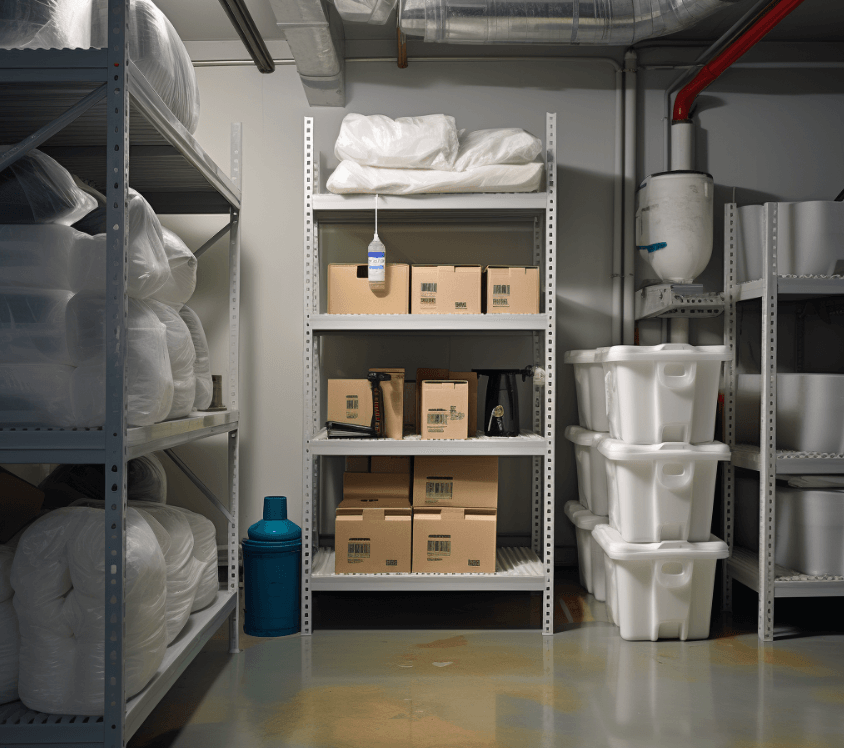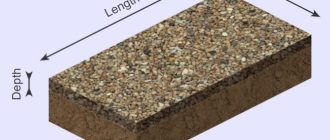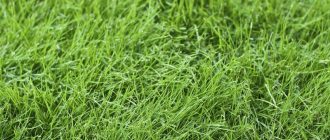When Should I Use a Drying Agent?
When it comes to chemical laboratories and other environments where moisture is a common problem, the use of a drying agent is crucial. A drying agent, also known as a desiccant, is a substance that absorbs moisture from its surroundings, thereby reducing humidity levels.
But when should you use a drying agent? One key scenario is when storing sensitive materials that are prone to degradation in the presence of moisture. For example, if you have a collection of valuable documents or electronics, the presence of excessive moisture can lead to mold growth or corrosion. In such cases, using a drying agent can help preserve the integrity of these items.
Moreover, drying agents should be used when working with certain chemicals that are sensitive to moisture. Water-sensitive compounds can often react with water, leading to unwanted side reactions or even dangerous outcomes. By employing a drying agent, you can minimize the chances of such reactions occurring and ensure the success of your experiments.
It’s important to note that not all drying agents are created equal. Some are better suited for specific applications, while others may have limitations. Therefore, it is crucial to carefully select the appropriate drying agent based on your specific needs and the nature of the materials or chemicals involved.
What is a Drying Agent?
A drying agent is a substance that is used to remove or reduce moisture from a given material or environment. It is often employed in various industries and applications where the presence of moisture can be detrimental or undesirable.
Drying agents come in different forms, including powders, gels, and liquids. They work by either absorbing moisture or changing the physical properties of the material to facilitate faster drying. The choice of drying agent depends on the specific application and the material being dried.
When should you use a drying agent?
- When moisture can cause damage: Drying agents are commonly used in industries such as pharmaceuticals, electronics, and food processing, where moisture can degrade products or lead to the growth of mold and bacteria.
- When quick drying is required: Drying agents are particularly useful in situations where time is a critical factor. They can help accelerate the drying process, saving time and improving productivity.
- When preserving materials: Drying agents are often used to preserve sensitive materials such as historical artifacts, documents, and artwork. By removing moisture, they help prevent decay and prolong the lifespan of these items.
It is important to note that not all materials require the use of a drying agent. For certain substances or environments, natural drying methods may be sufficient. However, when moisture poses a risk or impedes the desired outcome, a drying agent can be a valuable tool to achieve the desired result.
Understanding Moisture Absorption
Moisture absorption is the process by which a substance or material collects and retains water molecules from its surroundings. This can occur through direct contact with liquid or vapor, or through the process of osmosis.
When it comes to the use of a drying agent, understanding moisture absorption is essential. Drying agents, also known as desiccants, are substances that have a high affinity for water molecules. They work by absorbing moisture from the air or a specific environment, effectively reducing the level of humidity.
There are various situations when using a drying agent can be beneficial:
- When you want to preserve the freshness and quality of certain products, such as food, medicines, or sensitive electronic components. By removing excess moisture, you can prevent spoilage, degradation, or corrosion.
- When you need to protect important documents, artwork, or photographs from humidity damage. Moisture can cause fading, warping, or mold growth, which can ruin these valuable items.
- When you are storing or shipping goods or equipment in containers or packaging. Drying agents can help maintain the optimal conditions and prevent damage caused by moisture during transit or storage.
- When you are dealing with a water leak or flood damage. Drying agents can facilitate the drying process and prevent secondary damages, such as mold growth or structural deterioration.
It is important to note that not all drying agents are suitable for every situation. Different drying agents have varying absorption capacities and specific uses. Some common types of drying agents include silica gel, activated charcoal, calcium chloride, and molecular sieves.
In conclusion, understanding moisture absorption and knowing when to use a drying agent can help prevent damage, maintain quality, and prolong the lifespan of various products and materials. Whether it’s for preservation or remediation purposes, proper utilization of drying agents can be highly beneficial in controlling moisture levels and protecting against the harmful effects of excess humidity.
Importance of Drying Agents
When performing certain scientific experiments or processes, it is essential to remove excess moisture or solvents from the desired substance. This is where a drying agent comes into play. A drying agent is a substance that has high affinity for water molecules, allowing it to effectively remove them from a solution or material.
Using a drying agent is crucial in many situations, as it helps to ensure the accuracy and reliability of experimental results. When water or solvents are present in a substance, they can interfere with reactions, alter chemical properties, or even cause substances to degrade. By using a drying agent, these unwanted effects can be minimized or eliminated.
There are several instances when a drying agent should be used:
- During laboratory experiments: Whether in organic chemistry, analytical chemistry, or any other scientific field that involves manipulations with liquids, a drying agent is often necessary. It helps to remove water or solvents from samples, allowing for more accurate measurements and observations.
- In industrial processes: In industries such as pharmaceuticals or manufacturing, drying agents are used to remove moisture from materials or products. This helps to prevent spoilage, ensure product quality, and extend shelf life.
- In storage or transportation: When storing or transporting substances that are sensitive to moisture, a drying agent can be used to absorb any humidity present in the environment. This prevents degradation or deterioration of the substance and maintains its stability over time.
The choice of a drying agent depends on the specific application and substances involved. Common drying agents include silica gel, calcium chloride, molecular sieves, and anhydrous salts. It is important to carefully select the appropriate drying agent based on its compatibility with the substance being dried and the desired level of moisture removal.
In conclusion, the use of a drying agent is crucial in various scientific and industrial processes. It helps to remove excess moisture or solvents, ensuring accurate results, maintaining product quality, and preventing degradation. When performing experiments, in industrial processes, or during storage and transportation, it is important to consider the use of a drying agent to achieve optimal outcomes.
Indications for Using a Drying Agent
There are several indications for when you should consider using a drying agent. Drying agents, also known as desiccants, are substances that absorb moisture from their surroundings. They are commonly used in various industries and applications, including manufacturing, packaging, and storage.

- High humidity: If you are working or storing materials in an environment with high humidity levels, a drying agent can help remove excess moisture and prevent damage or spoilage.
- Moisture-sensitive materials: Many materials, such as electronics, pharmaceuticals, and certain chemicals, are sensitive to moisture and can degrade or lose their effectiveness when exposed. In such cases, a drying agent can help maintain the integrity and quality of these materials.
- Preventing corrosion: Moisture is one of the main factors that contribute to the development of corrosion on metal surfaces. By using a drying agent, you can help reduce the moisture content in the environment and minimize the risk of corrosion.
- Extending shelf life: For products that have a limited shelf life, such as food or certain perishable goods, using a drying agent can help extend their shelf life by reducing moisture and preventing spoilage.
It is important to note that the selection of a drying agent should be based on the specific requirements of your application. Different drying agents have different absorption capacities and properties, so it is crucial to choose the right agent for your needs. Additionally, proper handling and storage of the drying agent is necessary to ensure its effectiveness.
Best Application Areas
Drying agents are commonly used in various industries and situations where moisture control is important. Here are some of the best application areas where you should consider using a drying agent:
- Pharmaceutical Industry: In the pharmaceutical industry, drying agents are used to remove moisture from medications, vaccines, and other medical products. This helps to extend their shelf life and maintain their effectiveness.
- Food Preservation: When preserving food, it is important to remove moisture to prevent the growth of bacteria and mold. Drying agents can be used to absorb excess moisture from packaging materials, such as desiccant packets in beef jerky.
- Electronics Manufacturing: Moisture can cause damage to electronic components during manufacturing and storage. Drying agents, such as molecular sieves, are used in electronic manufacturing to keep the environment dry and prevent moisture-related failures.
- Gun Storage: Firearms are susceptible to rust and corrosion if exposed to moisture. Placing drying agents, like silica gel packets, inside gun safes can help absorb moisture and prevent damage to firearms.
- Data Centers: Data centers house large amounts of sensitive electronic equipment, including servers and networking devices. Drying agents can help maintain optimal humidity levels in data centers, preventing damage to equipment caused by excessive moisture.
- Art Conservation: Moisture can cause irreversible damage to works of art, including paintings and sculptures. Drying agents, such as dehumidifiers, are used in art conservation to maintain the ideal humidity levels in galleries and storage areas.
These are just a few examples of the many application areas where drying agents can be beneficial. It is important to assess your specific needs and consult experts in the industry to determine the best drying agent to use in your particular situation.
Considerations for Different Materials
When using a drying agent, it is important to consider the material you are working with. Different materials have different properties and require different handling when it comes to using a drying agent.
Organic Materials:
- When drying organic materials, such as paper or fabrics, it is important to use a gentle drying agent. These materials can be sensitive to heat and may be damaged if exposed to high temperatures. Silica gel is a commonly used drying agent for organic materials as it is non-toxic and absorbs moisture effectively without causing damage.
- Avoid using heat sources, such as ovens or hairdryers, to speed up the drying process for organic materials. This can lead to shrinkage, discoloration, or even combustion of the material.
Metals:
- When drying metal objects, it is important to use a drying agent that does not react with the metal. Calcium chloride is a commonly used drying agent for metals as it is non-reactive and absorbs moisture effectively.
- Ensure that the metal objects are properly cleaned and free from any oils or contaminants before using a drying agent. This will help prevent any corrosion or damage to the metal.
- Consider using a desiccator to dry metal objects. A desiccator is a specialized container that provides a controlled environment with a drying agent to remove moisture from the objects.
Electronics:
- When drying electronic devices, it is important to take extra precautions to avoid damage to the components. Silica gel packets can be used to absorb moisture, but care should be taken not to place them directly on the circuit boards or sensitive parts.
- Avoid using heat sources or excessive air flow near electronic devices. High temperatures or strong airflow can cause overheating or dislodging of components.
- If in doubt, consult the manufacturer’s guidelines or seek professional advice on how to properly dry electronic devices.
Other Considerations:
- For delicate or valuable items, it is recommended to seek professional assistance when it comes to drying. Professionals have the expertise and proper equipment to handle sensitive materials and ensure their safe drying.
- Always follow the instructions provided with the drying agent. Different drying agents may have specific guidelines or precautions that need to be followed for safe and effective use.
- If you are unsure whether a drying agent is suitable for a particular material, it is best to conduct a small test before applying it to the entire object. This can help prevent any potential damage or discoloration.
By considering the specific properties and requirements of different materials, you can ensure that a drying agent is used safely and effectively without causing any damage.
Common Drying Agent Options
When drying a substance, it is important to choose the right drying agent. There are several options available, each with its own advantages and considerations.
1. Calcium chloride
Calcium chloride is a popular choice for drying agents. It has a high affinity for water and can effectively absorb moisture. It is commonly used in desiccators or drying chambers to remove moisture from the air.
2. Silica gel
Silica gel is another commonly used drying agent. It is a porous substance that can adsorb moisture from the surrounding environment. Silica gel is often found in small packets and used to protect electronic devices or other moisture-sensitive items.
3. Molecular sieves
Molecular sieves are synthetic materials with highly porous structures. They can selectively adsorb molecules based on size, making them effective drying agents. Molecular sieves are commonly used in gas drying applications.
4. Anhydrous magnesium sulfate
Anhydrous magnesium sulfate, also known as Epsom salt, is a drying agent frequently used in laboratories. It has a strong affinity for water and can be used to dry organic solvents or remove water from a reaction mixture.
5. Sodium sulfate
Sodium sulfate is another widely used drying agent. It can effectively remove water from organic solutions and is often used in organic chemistry experiments. Sodium sulfate is relatively inexpensive and easy to obtain.
6. Drierite
Drierite is a brand name for a type of drying agent that contains anhydrous calcium sulfate. It is commonly used in laboratories to remove moisture from the air or to dry organic solvents. Drierite changes color when it becomes hydrated, indicating the need for replacement.
7. Potassium hydroxide
Potassium hydroxide, or KOH, is a strong drying agent that can absorb moisture through a process known as hygroscopy. It is commonly used in laboratory settings to dry gases or solvents. However, KOH is highly reactive and should be handled with care.
When choosing a drying agent, it is important to consider factors such as cost, availability, and specific drying requirements. Different drying agents may be suitable for different applications, so it is essential to choose the most appropriate one for the task at hand.
Choosing the Right Drying Agent
When it comes to choosing the right drying agent for a specific task, there are a few factors to consider. The type of agent that should be used will depend on the nature of the substance being dried and the desired outcome. Here are some tips and guidelines to help you make an informed decision:
- Identify the substance: Before selecting a drying agent, you should clearly identify the substance that needs to be dried. Different substances may require different drying agents.
- Consider the drying method: The method used to dry the substance can also help determine the appropriate drying agent. For example, if you plan to use a desiccator or vacuum oven, you may need a drying agent that can withstand high temperatures or low pressures.
- Understand the drying agent: It is important to have a good understanding of the drying agent you plan to use. Research its properties, such as its drying capacity, moisture absorption rate, and compatibility with the substance being dried.
- Assess the drying time: Some drying agents work more quickly than others. Consider the time constraints of your task and choose a drying agent that can meet the desired drying time.
- Be aware of potential reactivity: Certain drying agents can react with specific substances, leading to unwanted reactions or degradation of the material. Always check the compatibility of the drying agent with the substance being dried.
- Consider cost and availability: Cost and availability are also important factors to consider when choosing a drying agent. Some drying agents may be more expensive or difficult to obtain than others.
By taking these tips and guidelines into account, you can make an informed decision about which drying agent to use for your specific drying task. Remember to always follow proper safety precautions and consult relevant resources for specific recommendations.
Using a Drying Agent in Industrial Settings
In industrial settings, there are many situations where a drying agent should be used. These agents are substances that help remove moisture or water from various materials or environments. Here are some examples of when and why a drying agent may be necessary:
- When dealing with wet products: If you work with products that have a high moisture content, such as chemicals or food products, using a drying agent can help remove excess moisture and improve the quality and shelf life of the products.
- During manufacturing processes: Some manufacturing processes involve the use of water or other liquids, which need to be removed before the products can be further processed or packaged. A drying agent can speed up the drying process and ensure the products meet the required specifications.
- For maintaining equipment: Moisture can damage industrial equipment, leading to rust, corrosion, or malfunctions. By using a drying agent, you can effectively remove moisture from the equipment and prolong its lifespan.
Choosing the right drying agent is essential for achieving the desired results. Some common drying agents used in industrial settings include silica gel, molecular sieves, or activated alumina. The choice of drying agent depends on the specific application and requirements.
It’s important to follow proper guidelines and safety measures when using a drying agent in an industrial setting. This may include wearing protective gear, ensuring proper ventilation, and disposing of the drying agent according to local regulations.
In conclusion, a drying agent is a valuable tool in industrial settings to remove moisture or water from different materials or environments. By using a drying agent when necessary, you can improve product quality, expedite manufacturing processes, and prolong the lifespan of equipment.
Using a Drying Agent in Household Applications
When it comes to household applications, there are several situations where you should consider using a drying agent. A drying agent is a substance that helps remove moisture and humidity from a given environment, preventing the growth of mold, mildew, and other moisture-related problems.
Here are some common situations where you may need to use a drying agent:
- After a flood or water damage: If your home has been flooded or experienced water damage, it is crucial to use a drying agent to remove excess moisture from the affected areas. This will help prevent the growth of mold and mildew, which can lead to health problems and structural damage.
- In basements and crawl spaces: Basements and crawl spaces are prone to high humidity levels due to poor ventilation. Using a drying agent in these areas can help control moisture and prevent musty odors and mold growth.
- During wet seasons: If you live in a region with high humidity or experience wet seasons, using a drying agent can help maintain a dry and comfortable environment inside your home. This is especially important for preventing mold growth on walls, ceilings, and other surfaces.
There are different types of drying agents available for household use. Some common options include moisture-absorbing products like silica gel packets, calcium chloride, and activated charcoal. These products are typically placed in containers or spread in the affected areas to absorb excess moisture.
It is important to follow the instructions and safety guidelines provided with the drying agent. Additionally, regular maintenance and monitoring of moisture levels are essential to ensure optimal effectiveness.
In conclusion, using a drying agent in household applications is crucial to prevent moisture-related problems such as mold and mildew growth. Understanding when to use a drying agent and choosing the right type can help maintain a dry and healthy living environment.
Safety Precautions and Guidelines
When using a drying agent, it is important to follow proper safety precautions and guidelines to ensure your safety and the effectiveness of the agent. Here are some tips to keep in mind:
- Use the drying agent as directed: Always read and follow the instructions provided by the manufacturer. Different drying agents may have specific usage guidelines and safety instructions that you should adhere to.
- Wear protective gear: When handling a drying agent, wear appropriate personal protective equipment (PPE) such as gloves, goggles, and a lab coat or apron. This will help protect your skin, eyes, and clothing from any potential hazards.
- Avoid inhalation: Some drying agents may release fumes or dust particles that can be harmful if inhaled. Work in a well-ventilated area or use a fume hood to minimize your exposure to airborne particles.
- Store in a safe place: When you are not using the drying agent, store it in a secure location away from heat sources, open flames, and incompatible chemicals. Make sure the container is tightly sealed to prevent any accidental spills or leaks.
- Dispose of properly: If the drying agent becomes contaminated or is no longer effective, dispose of it according to local regulations. Do not pour it down the drain or throw it in the trash unless explicitly instructed to do so.
Remember, safety should always be your top priority when using any chemical or drying agent. If you have any doubts or concerns, consult with a knowledgeable professional or contact the manufacturer for further guidance.
Drying Agent Maintenance
When using a drying agent, it is important to properly maintain it to ensure optimal results. Here are some tips and guidelines for drying agent maintenance:
- Regular Inspection: Regularly inspect the drying agent to check for any signs of wear or damage. This includes looking for cracks, leaks, or any other issues that may affect its performance.
- Cleaning: Clean the drying agent regularly to remove any dirt, debris, or residue that may accumulate over time. This can be done by washing it with warm soapy water and gently scrubbing with a soft brush. Rinse thoroughly and allow it to dry completely before reusing.
- Storage: When not in use, store the drying agent in a cool, dry place away from direct sunlight and extreme temperatures. This will help prolong its lifespan and prevent any degradation.
- Replacing: If the drying agent becomes damaged or shows signs of reduced effectiveness, it should be replaced. Using a worn-out drying agent may not provide the desired results and could potentially lead to further damage.
By following these maintenance tips, you can ensure that your drying agent remains in good condition and continues to provide effective results when needed.
Tips for Maximizing Efficiency
- Use the drying agent when necessary: Assess the situation and determine if the use of a drying agent is needed. If the material or surface is already dry, there is no need to use a drying agent.
- Use the appropriate drying agent: Different materials may require different types of drying agents. Be sure to use the correct one for the specific material or surface you are drying.
- Follow instructions: Always read and follow the instructions provided by the manufacturer for the drying agent. This will ensure you are using it effectively and efficiently.
- Apply the drying agent evenly: When using a drying agent, make sure to distribute it evenly across the material or surface. This will help maximize its effectiveness and ensure consistent drying.
- Avoid overuse: Using too much drying agent can be wasteful and may not improve the drying process. Follow the recommended guidelines and avoid excessive application.
- Allow sufficient drying time: Be patient and allow enough time for the drying agent to work. Rushing the process may result in inadequate drying or damage to the material or surface.
- Monitor progress: Periodically check on the progress of the drying process to ensure it is proceeding as expected. Make adjustments if necessary.
- Properly store the drying agent: After use, make sure to store the drying agent properly to maintain its effectiveness. Follow the recommended storage guidelines provided by the manufacturer.
Question-answer:
How do I know if I need to use a drying agent?
There are a few signs that indicate you may need to use a drying agent. For example, if your product has a high water content or is prone to moisture absorption, using a drying agent can help remove excess moisture and prolong the shelf life. Additionally, if you notice any signs of moisture-related issues such as clumping, caking, or mold growth, it may be a good idea to incorporate a drying agent into your product.
What types of drying agents are available?
There are various types of drying agents that you can use, depending on the specific needs of your product. Some common drying agents include silica gel, molecular sieves, activated alumina, and calcium sulfate. Each of these drying agents works in a slightly different way and has different properties, so it’s important to choose the right one for your application.
How do drying agents work?
Drying agents work by absorbing moisture from the surrounding environment. They have a high affinity for water molecules, which allows them to effectively remove moisture from your product. This process helps prevent moisture-related issues such as clumping, caking, and mold growth, ultimately extending the shelf life of your product.
Are there any safety precautions to consider when using drying agents?
Yes, there are some safety precautions to keep in mind when using drying agents. First, it’s important to handle drying agents with care, as some may be irritants or corrosive substances. It’s also crucial to follow the manufacturer’s instructions for proper usage and storage of the drying agent. Lastly, make sure to keep drying agents away from direct contact with food or beverages, as they may contaminate the product.






